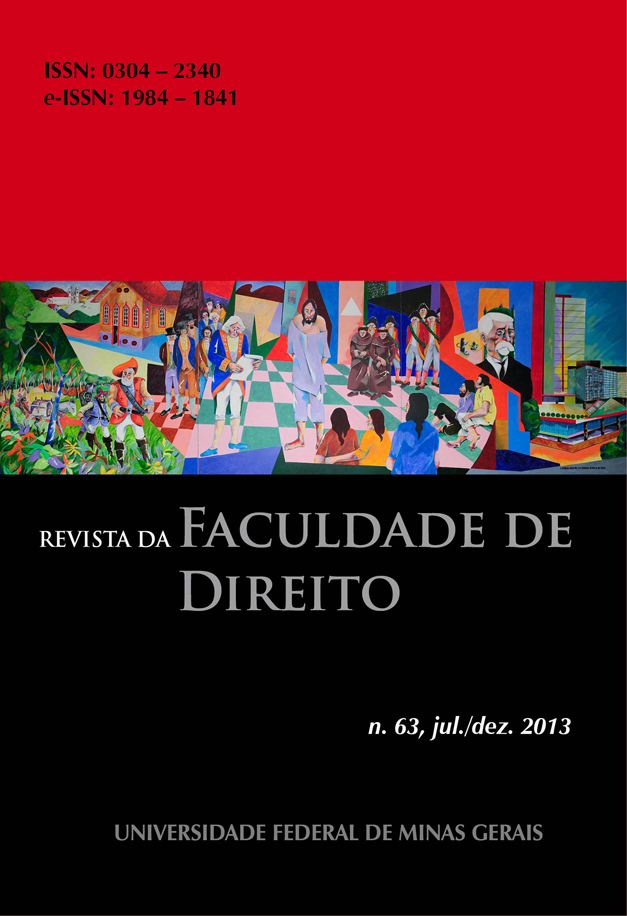AÇÃO DIRETA DE INCONSTITUCIONALIDADE E AÇÃO DECLARATÓRIA DE CONSTITUCIONALIDADE COMO INSTRUMENTOS DE DEFESA DOS DIREITOS FUNDAMENTAIS - DOI: 10.12818/P.0304-2340.2013v63p435
Resumo
O controle concentrado de constitucionalidade, no Brasil, nasce como controle prévio na Constituição Imperial de 1824, época em que não existe o controle judicial. Somente na República o controle judicial se desenvolve, iniciando com o controle difuso de constitucionalidade, nos termos da Constituição de 1891. O controle judicial concentrado e abstrato é instituído a partir da Constituição de 1934, que prevê a ação direta de inconstitucionalidade interventiva. A Ação Direta de Inconstitucionalidade, como ação genérica e principal, ingressa no Direito brasileiro por intermédio da Emenda Constitucional nº 16/1965. A partir daí, é prevista em todas as constituições. Atualmente, a Ação Direta de Inconstitucionalidade divide a função de controle de constitucionalidade com a Ação Declaratória de Constitucionalidade, criada pela Emenda Constitucional nº 3, de 1993, na vigência da Constituição de 1988. A presente pesquisa constata que a Ação Direta de Inconstitucionalidade é instrumento adequado à proteção de direitos fundamentais, conclusão que não se reproduz quanto à Ação Declaratória de Constitucionalidade, que necessita maturação capaz de evitar sua deslegitimação.
PALAVRAS-CHAVE: Processo constitucional. Controle concentrado de constitucionalidade. Direitos fundamentais.
The concentrated control of constitutionality, in Brazil, is born as prior control in Imperial Constitution 1824, when there is no judicial review. Only in the Republic the judicial control develops, starting with the diffuse control of constitutionality, under the Constitution of 1891. The judicial review is established from the 1934 Constitution, which provides for the direct action of unconstitutionality, hands-on. The direct action of unconstitutionality, as generic action and main, joins the Brazilian law through constitutional amendment 16/1965. From there, it is provided for in all constitutions. Currently, the Direct Action of Unconstitutionality divides the function of judicial review with the Declaratory Action of Constitutionality, created by Constitutional Amendment n. 3/1993, in the validity of the Constitution of 1988. The present research notes that the Direct Action of Unconstitutionality is an appropriate instrument for the protection of fundamental rights, but that’s not reproduced at the Declaratory Action of Constitutionality, which requires maturation ability avoids their delegitimation.
KEYWORDS: Constitutional process. Concentrated control of constitutionality. Fundamental rights.



